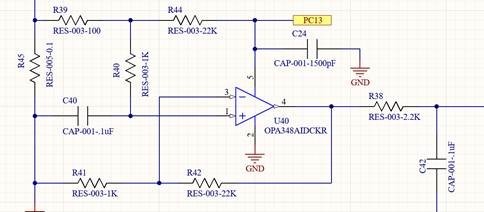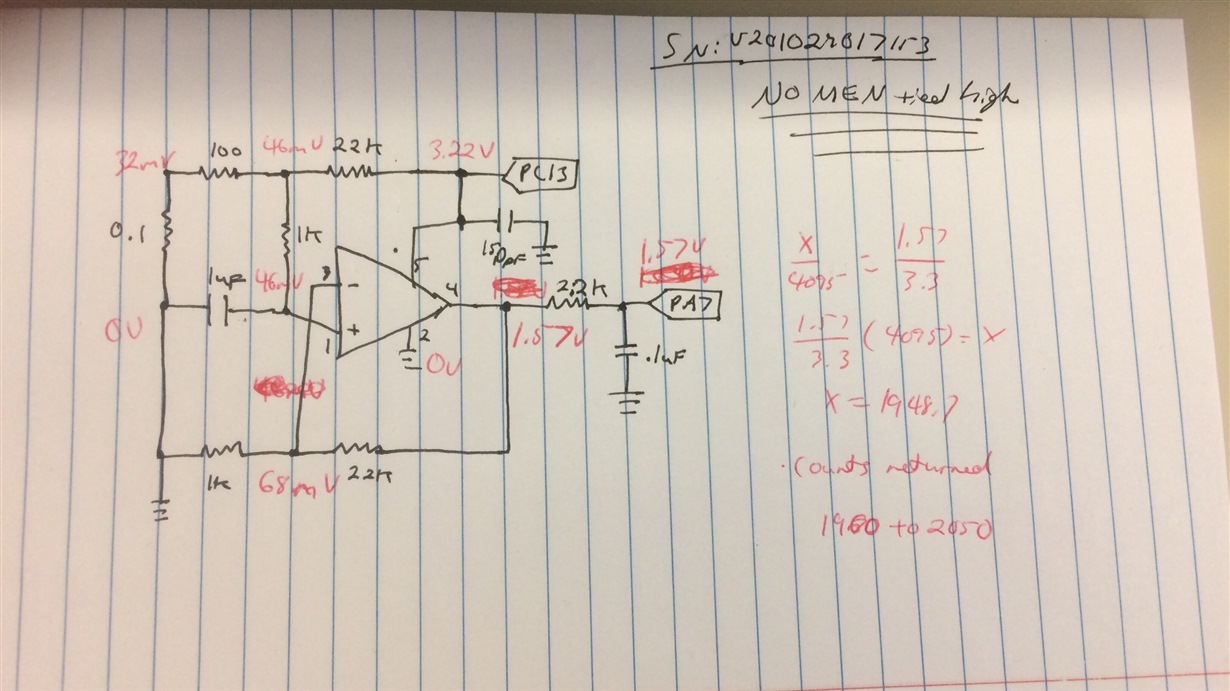Hey team,
I have a customer who is having an issue with the OPA348AIDCKR - below is the circuit schematic.
They verified that it is this part by swapping in a new op amp allowing the circuit to work however when swapping back in the old part it fails again. On three of the boards they had a differential of 2-3mV on the inputs and the outputs were over 0.4V (expecting 344mV) though I think this is failing due to the enable not being able to be driven properly. On the other two boards that failed the outputs were 2.8V and 3.28V on rails operating at 3.3V however the differential on the inputs was <1mv.
They were also curious about any part alternatives - the only parameters they can't afford to change are the input offset voltage and the rail to rail IO.



